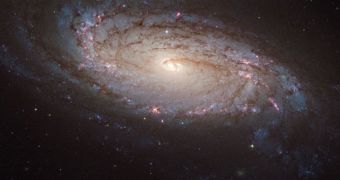While scanning the spiral galaxy NGC 5806, which is located in the constellation Virgo, astronomers using the NASA/ESA Hubble Space Telescope were able to detect the supernova explosion SN 2004dg.
The light this extreme event produced is visible as a faint yellow dot, at the bottom of the galaxy. This Hubble image was collected back in 2005, as experts were investigating the supernova's afterglow.
This composite photograph combines both optical and infrared wavelengths, and was pieced together from three different image sets. Hubble used its Advanced Camera for Surveys (ACS) instrument.
“NGC 5806 was chosen to be one of a number of galaxies in a study into supernovae because Hubble’s archive already contained high resolution imagery of the galaxy, collected before the star had exploded,” NASA experts say.

 14 DAY TRIAL //
14 DAY TRIAL //